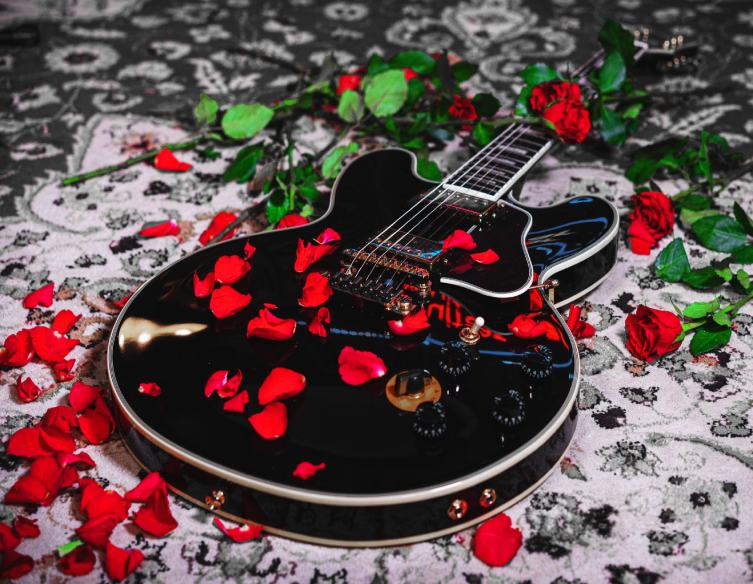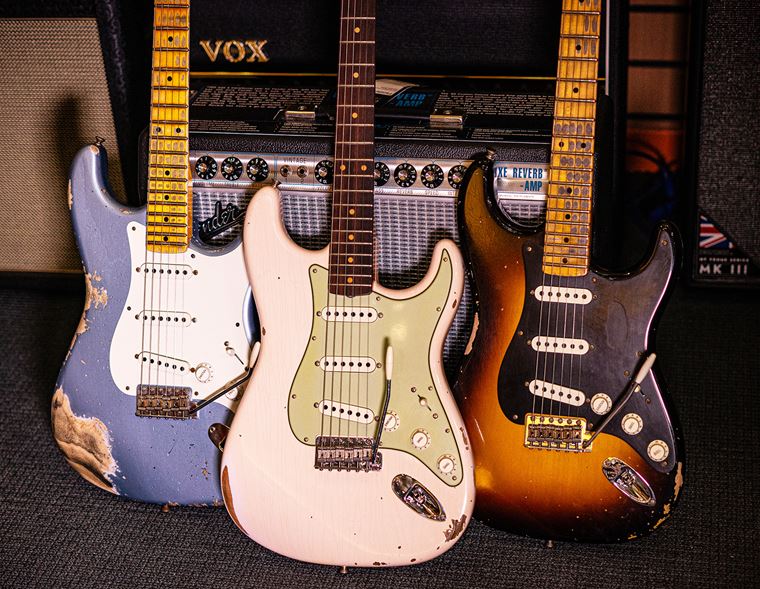27 Club: Members Who Died at Age 27
Published on 03 May 2024
Urban myths can be hard things to shake. Once culture gets a grip on an idea - particularly a macabre idea- then it tends to permeate and stick around. So it is with ‘the 27 Club’, a supposed phenomena of significant artists from around the world dying at the age of 27.
Today, I’ll look at the lives of some of the most famous 27 Club members, and remember them for the gifts they gave us all, even if the context is their shared, untimely demise.
27 Club Members at a Glance
- The Beginnings of the Myth
- Robert Johnson
- Amy Winehouse
- Jim Morrison
- Janice Joplin
- Jimi Hendrix
- Brian Jones
- Jean-Michel Basquiat
- Kurt Cobain
- There is No Such Thing as the 27 Club
The Beginnings of the Myth
Apparently, the 27 Club myth began in the early 70s, when it was noted that a large number of prominent musicians had all died - in the period between 1969 and ‘71 - at the age of 27. As you may expect of the era, drugs were involved in a big way, but the eeriness in which this realisation sat on culture gave people pause: this type of thing had never happened before…or had it?
Nowadays, you can look up a list online of well known people who’ve died at the age of 27, and that list is going right back to the Elephant Man! I'm not about to document things that far back, and I’ll be keeping this blog about the musicians, because actors and other notable figures are part of the 27 Club, too.
Come with me then, as I revisit some great songs and ghoulish scenes…

Robert Johnson
Blues guitar pioneer Robert Johnson is so shrouded in mystery, it’s amazing that we can see anything of his life at all. Innovative playing, a love of moonshine, a way with the ladies, a pact with the devil at midnight at the crossroads…there is so little known about Robert Johnson that what we do know sounds like a legend.
But there’s more! There’s the lack of a grave location (no less than three gravestones have been erected in assumed locations, all baked on different stories), and the mystery of his death itself. The poisoning story is all we have to go on, so it serves as fact when in fact no facts are available. Still, the idea of a jealous husband taking revenge on the womanising musician is certainly poetic, as are the constant references of ‘walking with the devil’ and ‘hellhounds’ by his side. It’s amazing stuff, but how much of any of it is true?
What we do know is that Johnson died at 27, under mysterious circumstances, and that there is no body. Other than that, we have his music, a few photos and an immense legend.
Amy Winehouse
The recent biopic of Amy Winehouse's life sparked off the idea for this very blog. Winehouse was an old-school star: a charismatic performer whose ‘persona’ was in fact her authentic self. For the entirety of her short but massively successful life, Winehouse walked it like she talked it, and paid the ultimate price for it, dying at 27 due to alcohol poisoning. I get mixed feelings when I see people singing along to her lyrics like ‘they tried to make me go to rehab, but I said no, no, no’ because it’s just a little close to the bone, but then, that’s probably the way Amy wanted it, right?
Jim Morrison
The shamanic, endlessly iconic Doors frontman was one of the original members of this somewhat dubious club. In the 6 years that the Doors were a band, Morrison went from shy poet to cultural icon, defining the role of ‘rock n roll frontman’ for everybody since.
Alas, Morrison had a dark side to his personality, one which seemed hellbent of self destruction. Alcohol was Jim’s main problem, but a move to Paris to escape his hangers-on (and his habits) turned foul when - according to Marianne Faithful - he uncharacteristically tried some particularly strong heroin. Never one for such a drug, it proved too much for the already ill singer and killed him in his bathtub.
His quick subsequent burial, hastily signed death certificate (by a mysterious doctor who has since forever vanished) and the lack of his bandmates seeing his body have led to an adjoining urban myth that Jim’s not dead at all, just happily away from the spotlight.
Janice Joplin
Janice Joplin was from the same ‘Woodstock’ generation/era as Morrison and Hendrix, when drug use was frowned upon but tolerated if one had the talent to back it up. Joplin certainly did, with one of history’s greatest singing voices.
She was arguably more famous than the band she sang for, which was called Big Brother and the Holding Company. After two albums with them, Joplin released one solo album, but her alcohol use caused significant problems in what became the last few months of her life.
A heroin usertoo, she was finally found dead in her hotel room from an accidental overdose, with the possibility of alcohol contributing to her demise. It is thought that, like Jim Morrison a year later, Joplin was given an unusually powerful blend of heroin, given that many of her dealer’s other customers also suffered overdoses that weekend. Another tragic accident, and another addition to the 27 club.
Jimi Hendrix
James Marshall Hendrix needs no introduction here, as his precious few years’ worth of recorded music continue to enthral and inform us all to this day.
It’s hardly a revelation to say that Hendrix had a relationship with a wide variety of drugs, but what is perhaps more surprising is that his death was an accident of altogether less sensational ingredients.
Jimi was used to self-medicating his way through the rigours of touring life with cocktails of booze, LSD, amphetamines and occasional heroin. It’s documented that he was a very chill guy mostly, but became quite a nightmare when he’d had too much alcohol.
On the night of his death in London, he ate dinner in his room with his girlfriend Monika Danneman, took a sleeping pill and went to bed. He never woke up.
Here’s the verdict of the coroner, as reported by the New York Times in 1970:
“LONDON, Sept. 28 (AP)—A London coroner returned an open verdict today on the death of Jimi Hendrix after a pathologist testified that the rock star had died of suffocation.
The coroner said there was insufficient evidence to suggest that Mr. Hendrix had taken his own life. The coroner's court heard medical testimony that the singer-guitarist had taken nine times the normal dose of sleeping tablets.
The verdict meant that the court was unable to decide the exact reason for Mr. Hendrix's death in London 10 days ago.
Prof. Donald Teare, a pathologist, said Mr. Hendrix, who was 27 years old, had died as a result of having swallowed vomit caused by barbiturate poisoning. He said there was no evidence that the singer was a drug addict”.
Brian Jones
We all love a spooky story, and the death of Brian Jones is just one of a few that surround the Rolling Stones. The others we can keep for a future blog, but Jones’ death is one of rock music’s great unanswered mysteries - and occurred when he was 27 - so let’s take a look at it today.
Brian Jones, fellow guitarist to Keith Richards (who himself described Jones as ‘an asshole’!) and founding member of the Stones, had become so much of a burden with his drinking and drugging that he was kicked out of the band in 1969. Imagine Keith Richards thinking that you’re taking too many drugs? Anyway, less than a month later, Jones was found dead, floating in the swimming pool of his country manor.
The coroner reported that he’d died of drowning, but that he’d been under the influence of drink & drugs, noting that his liver had weighed twice as much as it should have.
The mystery really gets going once you learn that Jones had some workies living on site with him as they did up his home, and frequently socialised with the star. Given the relatively common knowledge that Jones was frequently unpleasant to people - and, very tellingly - that Keith himself has suggested in the past that maybe a prank had gone wrong in his pool - was Jones’ death indeed an accident, but an accident of somebody else’s? Was foul play involved? One interesting point to note is that the coroner’s report stated drowning ‘in freshwater’, no chlorinated swimming pool water. Jones’ property had a fresh water trough not far from his pool…
There are books and Netflix documentaries to study if you feel like it, but all I can say for sure is that Brian Jones was 27 years old and his demise was ruled as ‘death by misadventure’.
Jean-Michel Basquiat
Now, what is a New York artist doing in this list of musicians, I hear you ask? Well, he certainly found fame as an artist (perhaps more than he could comfortably cope with), but Basquiat was a musician, too. His NYC rock band Gray sported no less a member than award-winning actor Vincent Gallo, so Basquiat belongs in our list today as far as I’m concerned!
Whilst inventing Neo-Expressionism on the streets of New York under his SAMO alias (short for ‘same old’), Basquiat’s band Gray played all of the city’s famous haunts such as CBGB, Max’s Kansas City and the Mudd Club. As we know, his art career soared like a shooting star and his life became massively different with his increased visibility. Heroin was a part of Jean-Michel’s life for many years, but in his last 18 months, he became reclusive and upped his habit. In the end, despite several attempts at getting sober, he died at home from an overdose in 1988, aged 27.
Kurt Cobain
Fame was difficult for Jean-Michel Basquiet, and proved to be equally difficult for Kurt Cobain, who died 6 years later.
Cobain’s band Nirvana had become a sensation - one of the biggest bands in the world - and the world was at Cobain’s feet. Years of striving for success had brought him to the place he’d always wanted to be, and what he found brought him to a level of despair he wasn’t able to live with.
Lots of people say lots of things about Kurt’s situation - from certain other musicians calling his lifelong stomach cramps an invention for attention, to various conspiracy theories abounding that his famously divisive and turbulent wife Coutney Love had him assassinated. The truth is no less interesting, but it is less sensational, and infinitely sadder. Cobain lived with depression for much of his life and had in fact survived a suicide attempt a month earlier in Rome. He’d told friends that his stomach pains were so intense during Nirvana’s 1991 tour that taking “heroin was the only thing that's saving me from shooting myself right now".
Sadly, that’s just what happened in April of 1994, when Cobain ended his life at home in Seattle after taking a combination of drugs and then using a shotgun. The voice of his generation was dead at 27.
There is No Such Thing as the 27 Club
It’s a fascinating and sad bunch of stories for sure, but let us not forget one basic fact here: there is no such thing as the 27 club. It’s just a few coincidences pulled together from the innumerable triumphs and tragedies at play throughout the world, and given some sort of faux-significance due to the fame of those involved.
I picked the most well-known ‘members’ for today’s blog, but there are loads more, from Hole bassist Kristen Pfaff to actor Anton Yelchin and loads more, all of whom died at the age of 27 under tragic circumstances.
Here’s a take away for you, though: as brief as these people’s stars shone, shone they certainly did. They made their mark on culture, on history and on art. They didn’t live long, and some of them didn’t live very happily, but all of them left tremendous gifts for everyone left behind. For that, and for so much else, we can read this list today and be both thankful and grateful.












